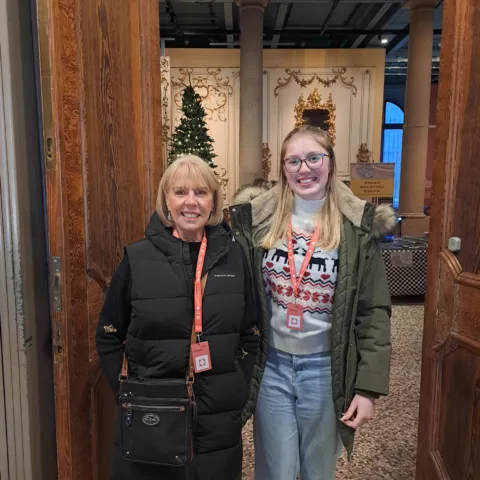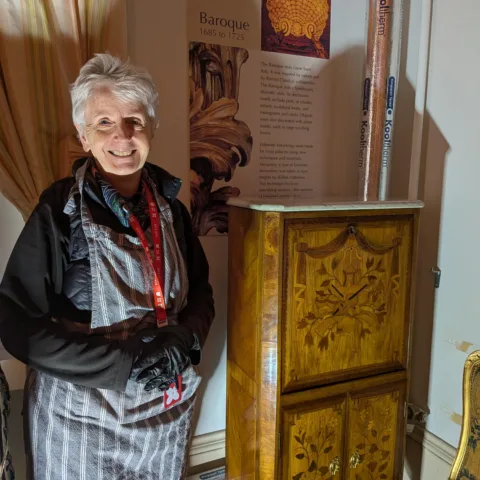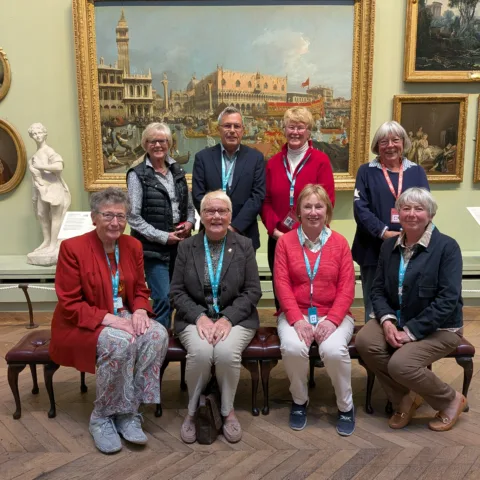The Bowes Museum Blog

Meet Dorothy, Volunteer at The Bowes Museum
Volunteering at The Bowes Museum
Volunteers are not paid, not because they are worthless but because they are priceless. And we are.
To offer to do something freely for others simply because we can or because we care or because ”if we don’t, then who?” does bring its own rewards.
The first sentence is not mine but it speaks to the heart of the motivation behind the ethos of service: personal satisfaction. There is so much out there that we can stick our hand in the air and say, “I’d like to help…”.
Being one of the 90 or so volunteers at The Bowes Museum is enjoyable, not least because you come to “work” in one of the most jaw-dropping beautiful buildings ever. Then stepping inside to be surrounded by such beauty, history and, yes, fun, is awe inspiring. As visitors enter the museum they breathe life into the galleries – there are volunteer guides and stewards who help them get the most out of their visit. “Have you come far, today?” “Are you here to see anything in particular?” Whether you live in Barnard Castle or beyond, a warm welcome is assured.
Most days there are school groups and families who come to explore and find out more about our collections. These younger visitors certainly add a lively buzz to the atmosphere but without the slightest detriment to others’ more peaceful progress through the three floors of exhibits and artworks. They’re always welcoming to volunteers in the education team. Behind the scenes, there are departments that keep the museum running smoothly day-to-day and here, too, there are opportunities to help out. For those who love research or have a second language, the museum library would be just the place to exercise those skills, for example by translating archive documents.
It doesn’t take long to feel at home here.
Then there’s the inevitable question: what’s your favourite object?

Well, like one of the founders, Joséphine Bowes, I love animals, so high on my list is the big-eared Jack Russell terrier portrait (I like to think this is Palette, one of her beloved dogs) which hangs near her bed. I also love the brown earthenware cat sitting in the ceramics gallery and, because at heart I’m still a pony-mad schoolgirl, I love all the paintings of John’s racehorses. Not to be ignored is the Cattle Scene painting by John Glover (1767-1849) which hangs on the second floor. It’s so big (255.5cm by 365.5cm) that it demands attention.

On to the Museum’s award-winning fashion and textiles galleries, where my favourite item is the c1930’s Evening Dress made of crepe, silk satin cut on the bias so its long panels cling to the body. It is decorated with twisted rope coils and its Hollywood glamour factor is off the scale. Of course, I imagine myself wearing it while gliding down a red carpet at a glitzy premiere. Well, we can all dream, can’t we?
The Bowes Museum is a special place, of that there is no doubt. It is also special to me personally as it was here – in the Music Room – where I got married in 1997. It is to this room that I am drawn most often and where I find my most favourite object. In truth, it is not an object, but a sound installation called Song.
Ancient and fragile keyboard instruments “speak” once again – thanks to the magic of digital technology. These long silent pianos, harpsicord and piano-cum-harmonium were recorded by Kit Haigh as part of #Untitled 10, an exhibition of ideas in which 10 different artists were commissioned to respond creatively to the permanent collections. Spend a few minutes listening and see if you can imagine how Joséphine herself might have felt as she listened, perhaps while hosting a supper party in Louveciennes in 1860.

Music has always been the art form with which I have found the strongest connection. It can get inside your head and fill your soul. It can link you with all who have heard the music before…
Song (the title comes from a scrap of manuscript found inside one of the pianos) is not a fixed composition but an example of generative music – music which is ever-changing. It is the Haxby Piano which repeatedly plays nine notes very slowly while the other instruments play a selection of complementing notes. Over time, spaces between the notes combine and diverge, creating phrases and sometimes chords, never to be repeated. It is, at various moments, mournful, hopeful, melancholic and uplifting.

And on that note… perhaps I have inspired you to volunteer? See the museum website to find out details of how to apply.
By Dorothy Brenkley







